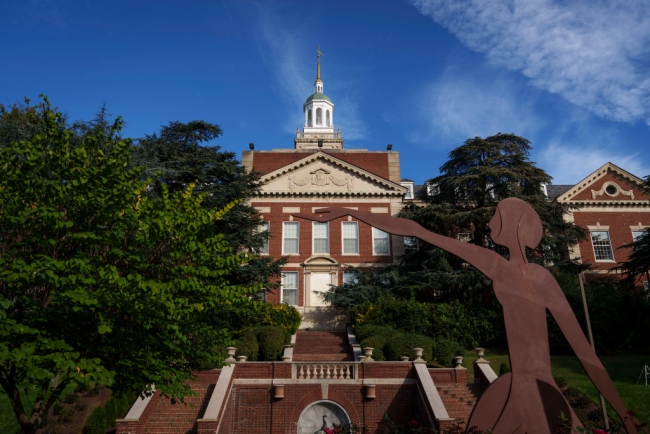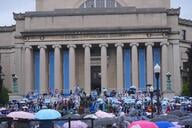You have /5 articles left.
Sign up for a free account or log in.

Howard University will build two new academic buildings, renovate an existing building and put up a new medical complex in the next four years.
Drew Angerer/Staff/Getty Images
Howard University announced last week that it will funnel $785 million into new construction and renovations over the next four years, a record-breaking investment in capital projects for the historically Black university.
The slate of new construction includes a complex for the university’s STEM programs and an academic building that will house the Chadwick Boseman School of Fine Arts, as well as the Cathy Hughes School of Communications. An existing building will be renovated to house the school of education and a chartered middle school—a plan that has some historic significance, said Wayne Frederick, president of Howard. Black teachers in Washington, D.C., were trained in that building during segregation.
The university will also put up a brand-new health sciences complex that will include the medical school and the dental school, the school of nursing, and other health programs. It will be attached to a new hospital, which will cost an additional $615 million, Frederick said.
“This is a watershed moment in the history of our institution,” Frederick said in a statement. “Because of the tremendously enhanced financial posture we have worked so hard to achieve, the state of the University has never been stronger.”
Howard’s landmark investment is noteworthy for any college or university, said Pete Zuraw, vice president of market strategy for Gordian, a facility and construction data company. Save for some of the country’s wealthiest institutions, most universities of Howard’s size—the institution enrolls about 7,800 undergraduates—cannot afford to make such investments in construction. Such an investment is even rarer among HBCUs, many of which cannot afford to repair existing facilities, let alone put up new buildings, Zuraw said.
Frederick said the university plans to break ground on the first project later this year and that he hopes all new construction will be finished by 2026.
To fund the projects, Howard recently issued a bond for $300 million, Frederick said. The university will also receive $200 million through the HBCU Capital Financing Program, a federal initiative that aims to provide HBCUs with funding for the repair, renovation and construction of campus facilities. Another $145 million will come from earnings on leased properties, and the university just launched a fundraising effort to raise the remaining $140 million—a goal that Frederick anticipates the university will surpass.
The new investment plans notably do not include money for repairs to student housing. Student protesters harshly criticized the Howard administration last fall for substandard housing, occupying the Blackburn Student Center for a month and making demands to university leaders—including that they clean up the mold discovered in some campus residences.
But housing renovations are not as pressing as other infrastructure needs, Frederick said. Howard’s student housing infrastructure is relatively new—90 percent of student residence halls are five years old or younger, he said.
“We do believe that those buildings are still in very good condition,” he said. “We do have, in our campus master plan, the intention to bring more rooms to the campus.”
HBCU presidents and other higher education officials have for years called for greater infrastructure funding for their institutions, and lawmakers are starting to listen: the Department of Education rolled out the HBCU Capital Financing program. Tennessee governor Bill Lee included $318 million in his budget for capital projects at Tennessee State University—the beginnings of reparations for chronic underfunding by the state. Former Virginia governor Ralph Northam sought $277 million for operational costs and construction at HBCUs last year. A number of HBCUs have also received significant philanthropic support from MacKenzie Scott and other wealthy philanthropists, which some institutions have earmarked for construction projects and deferred maintenance.
But the money that HBCUs require to address their deferred maintenance and fund new construction dwarfs the investments they’ve seen in recent years, said David Sheppard, chief legal officer at the Thurgood Marshall College Fund.
A 2018 study from the Government Accountability Office found that 46 percent of the buildings at HBCUs need to be repaired or replaced. A separate study by TMCF discovered that, on average, HBCUs need about $81 million each to address deferred maintenance issues, Sheppard said. For new construction, the institutions needed an average of $120 million each. And those are likely low estimates, according to Sheppard.
“The reality is that the vast, vast majority of our institutions are not as well positioned as Howard to make that kind of necessary investment in their campuses,” Sheppard said. “They want to be there, believe me. I’m sure that they also look forward to the day when they can issue a press release that says they’re making that kind of infrastructure investment on their respective campuses … but I’m afraid that is not the story that most of our institutions have the luxury of telling at this point.”




